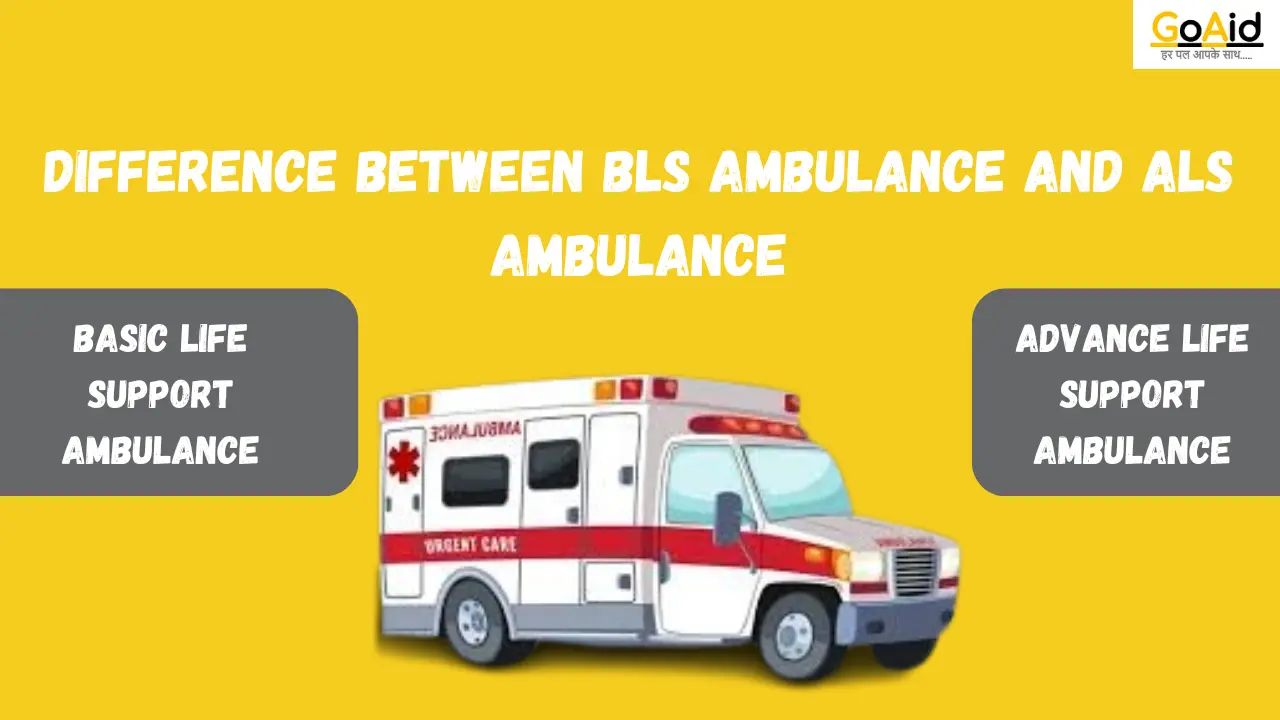If you ever have tried to read about ambulances, then in the type of ambulances, people generally donŌĆÖt find the basic difference between a Basic Life Support Ambulance and Advance Life Support Ambulance. Knowing about these ambulances can help you to choose the right category of ambulance catering to your needs perfectly.
If you are also the one who wants to know about these types of ambulances, then read this blog to the end, because we have added comprehensive details about the Basic Life Support (BLS) Ambulance and Advance Life Support (ALS) Ambulance.
So, letŌĆÖs start:
What is Basic Life Support (BLS) Ambulance?
A Basic Life Support (BLS) ambulance is equipped to provide emergency care for those patients who are not in extreme hurry. These ambulances are staffed by Emergency Medical Technicians (EMTs).
BLS ambulances offer essential services such as CPR, basic airway management, oxygen administration, and patient transport. They handle less critical situations where advanced medical intervention is not immediately required, ensuring safe and timely transportation to medical facilities.
What is Advance Life Support (ALS) Ambulance?
An Advanced Life Support (ALS) ambulance is equipped with advanced medical equipment and staffed by paramedics capable of providing comprehensive emergency care. These ambulances handle critical situations, offering services like advanced airway management, intravenous therapy, cardiac monitoring, and medication administration.
ALS ambulances are essential for severe emergencies, delivering higher-level medical interventions en route to the hospital, and ensuring optimal patient care.
Key Difference between BLS and ALS Ambulance
We have enlisted the 10 key differences between BLS and ALS Ambulance Services:
| Key Difference | BLS Ambulance | ALS Ambulance |
| Staffing | EMTs (Emergency Medical Technicians) | Paramedics |
| Medical Equipment | Basic equipment (e.g., oxygen, defibrillator) | Advanced equipment (e.g., cardiac monitors, IV pumps) |
| Services Provided | Basic emergency care (e.g., CPR, oxygen therapy) | Advanced emergency care (e.g., intubation, drug therapy) |
| Patient Handling | Non-critical patients | Critically ill or injured patients |
| Medication Administration | Limited to basic medications | Can administer a wide range of medications |
| Interventions | Non-invasive procedures | Invasive procedures (e.g., IV insertion, intubation) |
| Monitoring Capabilities | Basic vital signs monitoring | Advanced monitoring (e.g., ECG, blood pressure) |
| Transportation Focus | Stable patients needing transport | Unstable patients requiring continuous medical care |
| Cost | Generally lower cost | Higher cost due to advanced care capabilities |
| Training Level | Basic EMT training | Advanced paramedic training |
Significance of BLS Ambulance
These are the key significances of BLS Ambulances:
- Basic Emergency Care: Provides essential emergency medical care such as CPR and oxygen therapy.
- Cost-Effective: Offers a more affordable option for non-critical patient transport.
- Rapid Response: Ensures timely arrival for less severe emergencies, preventing conditions from worsening.
- Patient Transport: Safely transports stable patients to medical facilities.
- Wide Availability: More common and widely available compared to ALS units.
- Basic Equipment: Equipped with necessary tools for handling common emergencies.
- First Aid: Capable of providing immediate first aid at the scene of an incident.
- Oxygen Administration: Can administer oxygen to patients with respiratory distress.
- CPR Administration: Trained staff can perform CPR to maintain circulation and breathing.
- Initial Assessment: Conducts initial assessment and stabilization before transferring to advanced care if needed.
Significance of ALS Ambulance
These are the key significances of ALS Ambulances:
- Advanced Medical Care: Provides comprehensive emergency medical interventions, including advanced airway management.
- Critical Care Transport: Transports critically ill or injured patients requiring continuous monitoring and advanced treatment.
- Life-Saving Interventions: Capable of administering life-saving medications and procedures.
- Advanced Monitoring: Uses sophisticated equipment to monitor vital signs and cardiac function.
- Highly Trained Staff: Staffed by paramedics with advanced training in emergency medical care.
- Cardiac Care: Equipped to handle cardiac emergencies, including defibrillation and ECG monitoring.
- Invasive Procedures: Can perform invasive procedures such as IV insertion and intubation.
- Drug Administration: Authorized to administer a wide range of medications for various medical conditions.
- Severe Trauma Management: Essential for managing severe trauma cases and providing pre-hospital critical care.
- Enhanced Patient Outcomes: Improves patient outcomes by providing high-level care en route to the hospital.
Conclusion
in conclusion, We have provided you with comprehensive information about the differences between Basic Life Support (BLS) and Advanced Life Support (ALS) ambulance services. Understanding these distinctions is crucial for recognizing the appropriate level of care needed in various emergencies.
BLS ambulances offer essential emergency care for stable patients, while ALS ambulances provide advanced medical interventions for critically ill or injured patients. If you have any queries or need further clarification, please feel free to ask in our comment box. We are here to help and will respond as soon as possible.
















